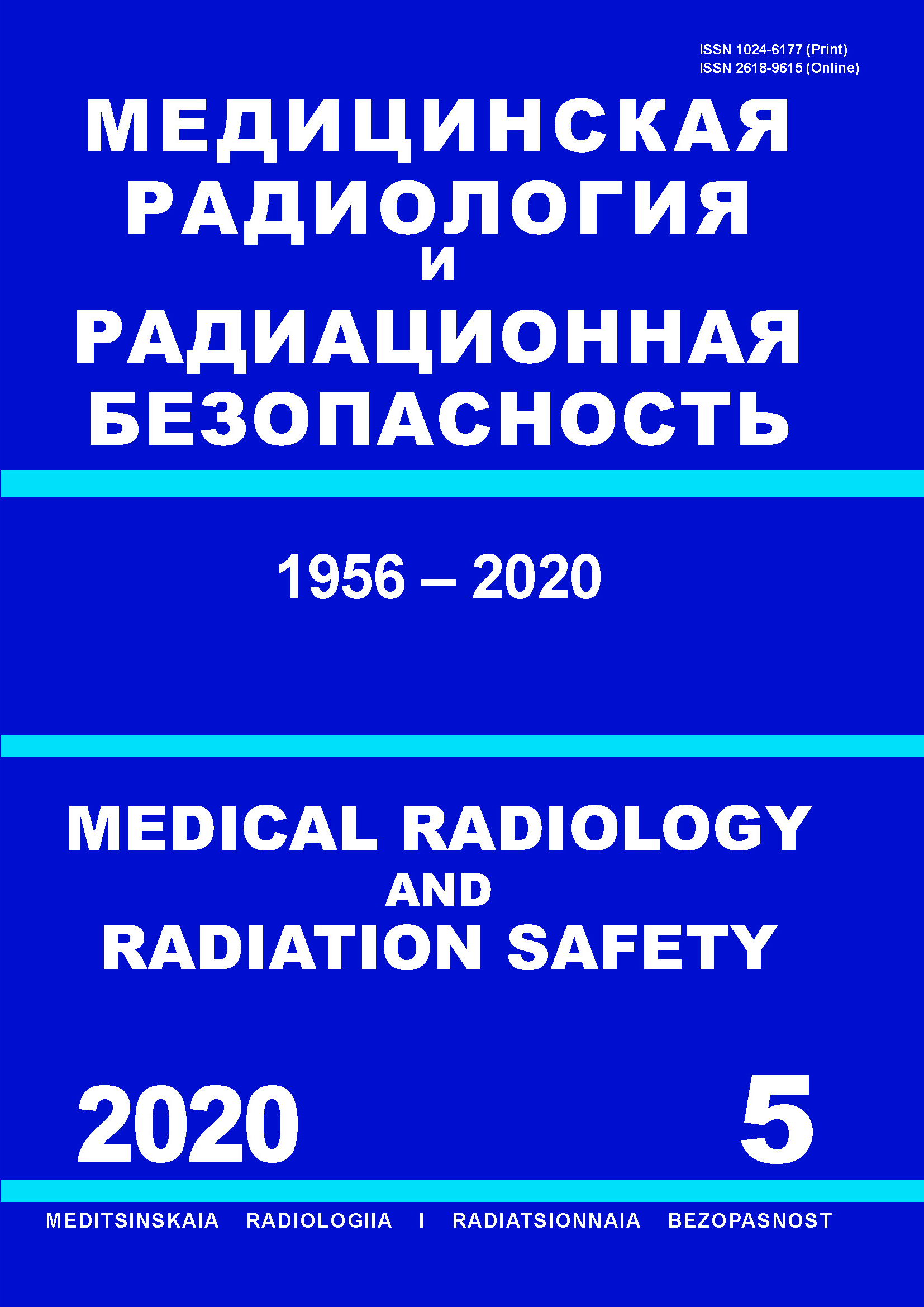Russian Federation
Russian Federation
Russian Federation
Purpose: Analysis and prognosis of mortality rate, specific causes of death and mortality structure in the male cohort of the Chernobyl cleanup workers monitored from 1992 over 2017. Materials and methods: Analysis and prognosis of mortality among the Chernobyl cleanup workers for the follow up period 1992-2017 were based on personal death records stored at the National Radiation Epidemiological Registry (NRER). The workers entered the exclusion zone in 1986 and in 1987, who had documented dose records were included in the monitoring cohort. In 1992 the cohort size was 72432 persons , average radiation dose was 130.8 mGy. For the period of the cohort monitoring 27051 cleanup workers died with the following causes of death: malignant neoplasms – 4621 cases, circulatory diseases – 11410 cases, traumas and poisoning – 5110 cases, other –5910. To prognose mortality and mortality structure data on age-specific intensity of partial mortality and total mortality during the monitoring period were used. Results: The predicted size of the cohort will be 22,000 persons in 2030. Mortality structure in 2017: malignant neoplasms – 17%; circulatory diseases – 42%; traumas and poisoning – 19%, other – 22%. The mortality structure in 2030 will be: malignant neoplasms – 24%; circulatory diseases – 49%; traumas and poisoning – 11%, other – 16%. Cleanup workers’ the average time left to live estimated in 2017 was 11.1 years (their average age in 2017 was 62.4 years), it means that their average life expectancy will be 73.5 years. Average life expectancy of Russian males is 70.4 years. Increased life span of the cleanup workers can be due to their good health, social support including regular special medical examination, the effect of the natural selection cannot be excluded as well. Conclusion: Results of the study can serve as example of organization of high effective specialized medical examination of the Chernobyl cleanup workers. The research outcomes will be useful for analysis of mortality among members of a closed population following exposure to hazardous technogeneous factors.
Chernobyl cleanup workers, prognosis of mortality, National Radiation Epidemiological Registry, non-parametric method of analysis, intensity of mortality, mortality risks concurrence, mortality structure, malignant neoplasms, circulatory diseases, traumas and poisoning, average lifespan
1. Andersen P.K., Borgan O., Gill R.D., Keiding N. Statistical models based on counting processes. New York: Springer-Verlag. 1993. 784 p.
2. Hougaard P. Analysis of multivariate survival data. New York: Springer-Verlag. 2000. 542 p.
3. Hougaard P. Multi-state models: a review // Lifetime Data Anal. 1999. Vol. 5. № 3. P. 239-264.
4. Commenges D. Multi-state models in epidemiology // Lifetime Data Anal. 1999. Vol. 5. № 4. P. 315-327.
5. Levenberg K. A method for the solution of certain non-linear problems in least squares // Quart. Appl. Math. 1944. Vol. 2. № 2. P. 164-168.
6. Marquardt D. An algorithm for least-squares estimation of nonlinear parameters // J. Soc. Indust. Appl. Math. 1963. Vol. 11. № 2. P. 431-441.
7. Gorskiy A.I., Maksyutov M.A., Tumanov K.A., Schukina N.V., Chekin S.Yu., Ivanov V.K. Neparametricheskiy analiz radiacionnyh riskov smertnosti sredi likvidatorov posledstviy avarii na ChAES // Radiacionnaya biologiya. Radioekologiya. 2016. T. 56. № 2. S. 138-148.
8. Ivanov V.K., Karpenko S.V., Kascheev V.V., Chekin S.Yu., Maksyutov M.A., Tumanov K.A., Schukina N.V., Kochergina E.V., Zelenskaya N.S., Lashkova O.E., Ivanov S.A., Kaprin A.D. Radiacionnye riski rossiyskih uchastnikov likvidacii posledstviy avarii na Chernobyl'skoy AES za period 1992-2017 gg. Chast' II: smertnost' ot solidnyh rakov // Radiaciya i risk. 2020. T. 29. № 1. S. 18-31.
9. Gorskiy A.I., Maksyutov M.A., Tumanov K.A., Kochergina E.V., Korelo A.M. Statisticheskie svyazi smertnosti likvidatorov s dozoy oblucheniya // Radiaciya i risk. 2018. T. 27. №1. S. 22-32.





